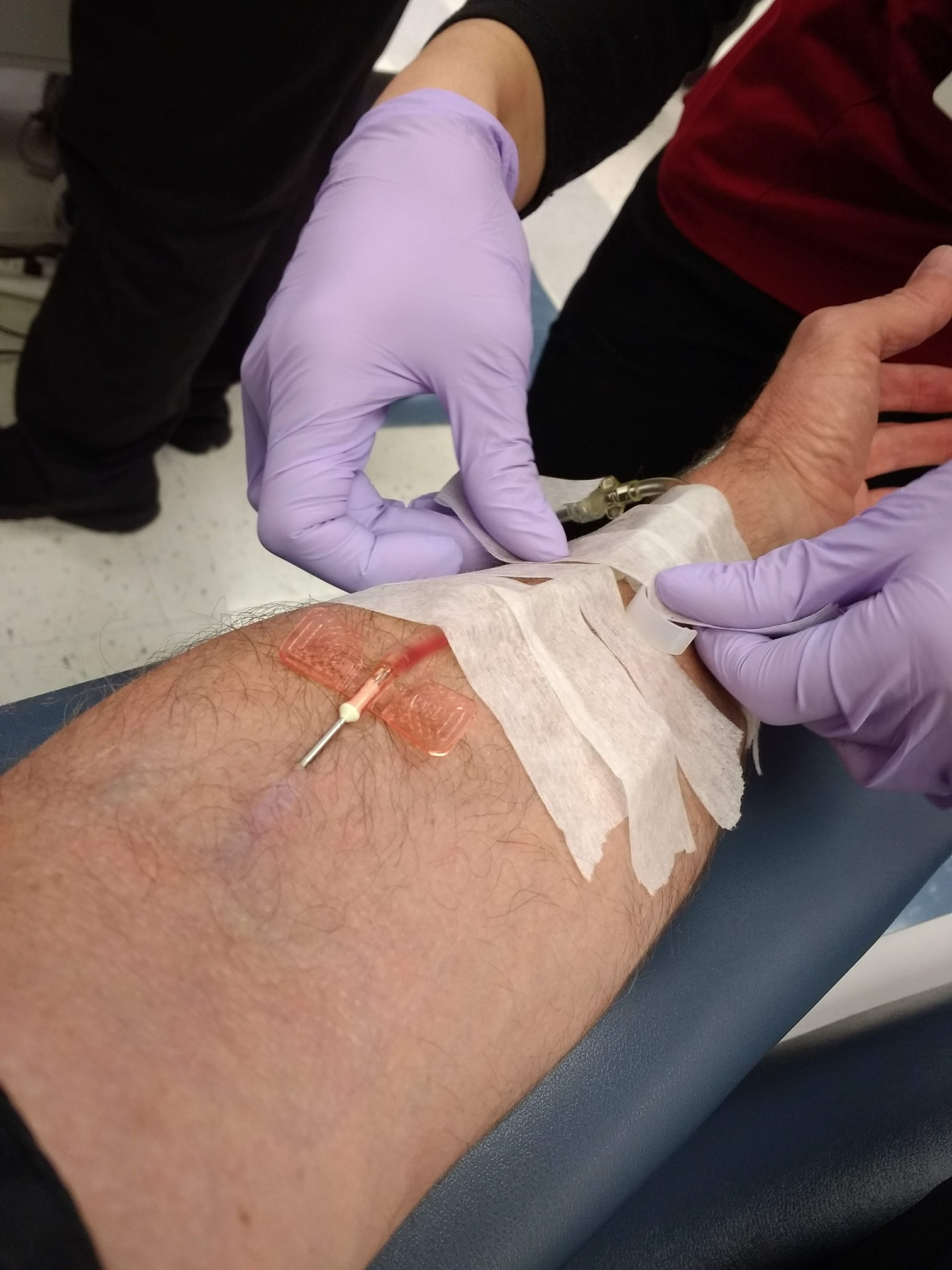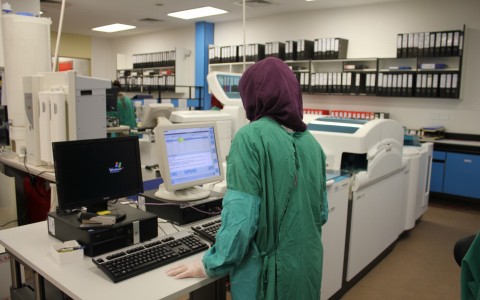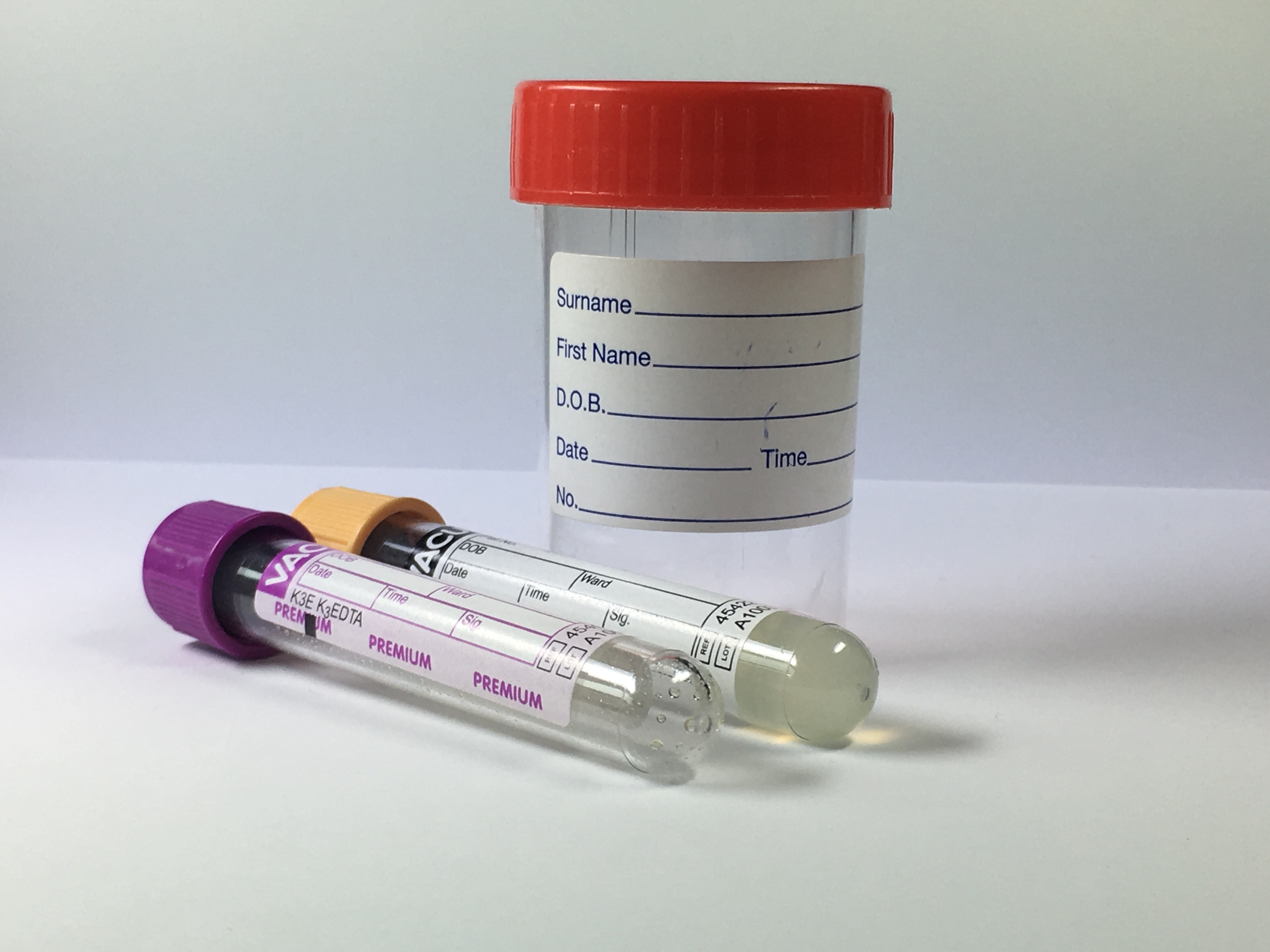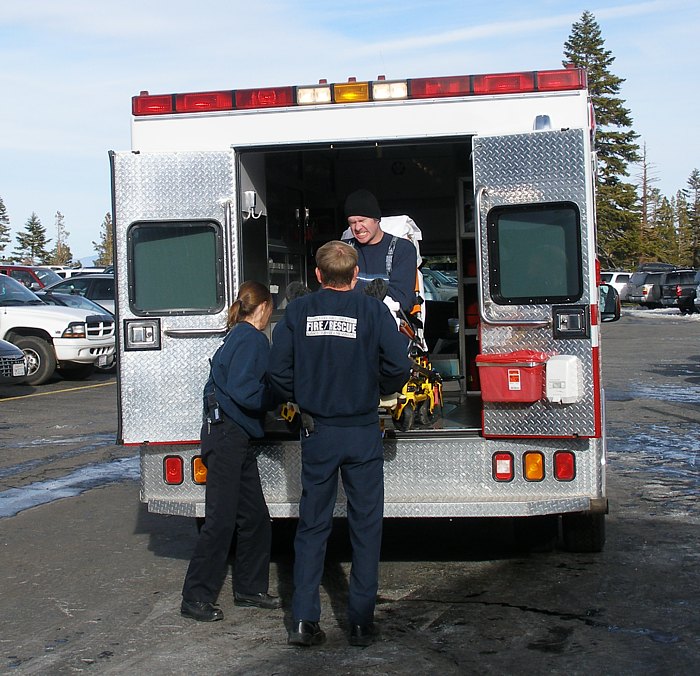|
Venipuncture
In medicine, venipuncture or venepuncture is the process of obtaining intravenous access for the purpose of venous Sampling (medicine)#blood, blood sampling (also called ''phlebotomy'') or intravenous therapy. In healthcare, this procedure is performed by Medical Laboratory Scientist, medical laboratory scientists, physician, medical practitioners, some EMTs, paramedics, phlebotomists, Kidney dialysis, dialysis technicians, and other nursing staff. In veterinary medicine, the procedure is performed by veterinarians and Paraveterinary worker, veterinary technicians. It is essential to follow a standard procedure for the collection of blood specimens to get accurate laboratory results. Any error in collecting the blood or filling the test tubes may lead to erroneous laboratory results. Venipuncture is one of the most routinely performed invasive procedures and is carried out for any of five reasons: # to obtain blood for diagnostic purposes; # to monitor levels of blood component ... [...More Info...] [...Related Items...] OR: [Wikipedia] [Google] [Baidu] |
Winged Infusion Needle
Butterfly needle A winged infusion set—also known as "butterfly" or "scalp vein" set—is a device specialized for venipuncture: i.e. for accessing a superficial vein or artery for either intravenous injection or phlebotomy. It consists, from front to rear, of a hypodermic needle, two bilateral flexible "wings", flexible small-bore transparent tubing (often 20–35 cm long), and lastly a connector (often female Luer). This connector attaches to another device: e.g. syringe, vacuum tube holder/hub, or extension tubing from an infusion pump or gravity-fed infusion/ transfusion bag/bottle. Newer models include a slide and lock safety device slid over the needle after use, which helps prevent accidental needlestick injury and reuse of used needles, which can transmit infectious disease such as HIV and viral hepatitis. Use During venipuncture, the butterfly is held by its wings between thumb and index finger. This grasp very close to the needle facilitates precise placem ... [...More Info...] [...Related Items...] OR: [Wikipedia] [Google] [Baidu] |
Phlebotomist
Phlebotomy is the process of making a puncture in a vein, usually in the arm, with a cannula for the purpose of drawing blood. The procedure itself is known as a venipuncture, which is also used for intravenous therapy. A person who performs a phlebotomy is called a phlebotomist, although most doctors, nurses, and other technicians can also carry out a phlebotomy. In contrast, phlebectomy is the removal of a vein. Phlebotomies that are carried out in the treatment of some blood disorders are known as '' therapeutic phlebotomies''. The average volume of whole blood drawn in a therapeutic phlebotomy to an adult is 1 unit (450–500 ml) weekly to once every several months, as needed. Etymology From ( – 'blood vessel, vein' + 'cutting'), via (modern French ). Phlebotomies Phlebotomies are carried out by phlebotomists – people trained to draw blood mostly from veins for clinical or medical testing, transfusions, donations, or research. Blood is collected primarily by per ... [...More Info...] [...Related Items...] OR: [Wikipedia] [Google] [Baidu] |
Blood Analysis
A blood test is a laboratory analysis performed on a blood sample that is usually extracted from a vein in the arm using a hypodermic needle, or via fingerprick. Multiple tests for specific blood components, such as a glucose test or a cholesterol test, are often grouped together into one test panel called a blood panel or blood work. Blood tests are often used in health care to determine physiological and biochemical states, such as disease, mineral content, pharmaceutical drug effectiveness, and organ function. Typical clinical blood panels include a basic metabolic panel or a complete blood count. Blood tests are also used in drug tests to detect drug abuse. Extraction A venipuncture is useful as it is a minimally invasive way to obtain cells and extracellular fluid ( plasma) from the body for analysis. Blood flows throughout the body, acting as a medium that provides oxygen and nutrients to tissues and carries waste products back to the excretory systems f ... [...More Info...] [...Related Items...] OR: [Wikipedia] [Google] [Baidu] |
Median Cubital Vein
In human anatomy, the median cubital vein (or median basilic vein) is a superficial vein of the arm on the anterior aspect of the elbow. It classically shunts blood from the cephalic to the basilic vein at the roof of the cubital fossa. It is typically the most prominent superficial vein in the human body, and is visible when all other veins are hidden by fat or collapsed during a shock. It arises from the cephalic vein 2.5 cm (one inch) below the lateral epicondyle of the humerus, runs obliquely upward and medially, and empties into the basilic vein 2.5 cm (one inch) above the medial epicondyle. It is routinely used for venipuncture (taking blood) and as a site for an intravenous cannula. This is due to its particularly wide lumen, and its tendency to remain stationary upon needle insertion. Structure The median cubital vein is a superficial vein of the arm. It lies on the anterior aspect of the elbow, in the cubital fossa superficial to the bicipital aponeurosis. It brid ... [...More Info...] [...Related Items...] OR: [Wikipedia] [Google] [Baidu] |
Blood Collection
In medicine, sampling is gathering of matter from the body to aid in the process of a medical diagnosis and/or evaluation of an indication for treatment, further medical tests or other procedures. In this sense, the sample is the gathered matter, and the sampling tool or sampler is the person or material to collect the sample. Sampling is a prerequisite for many medical tests, but generally not for medical history, physical examination and radiologic tests. By sampling technique * Obtaining excretions or materials that leave the body anyway, such as urine, stool, sputum, or vomitus, by direct collection as they exit. A sample of saliva can also be collected from the mouth. * Excision (cutting out), a surgical method for the removal of solid or soft tissue samples. * Puncture (also called ''centesis'') followed by aspiration is the main method used for sampling of many types of tissues and body fluids. Examples are thoracocentesis to sample pleural fluid, and amniocentesis ... [...More Info...] [...Related Items...] OR: [Wikipedia] [Google] [Baidu] |
Sampling (medicine)
In medicine, sampling is gathering of matter from the body to aid in the process of a medical diagnosis and/or evaluation of an indication (medicine), indication for treatment, further medical tests or other procedures. In this sense, the sample is the gathered matter, and the sampling tool or sampler is the person or material to collect the sample. Sampling is a prerequisite for many medical tests, but generally not for medical history, physical examination and radiologic tests. By sampling technique * Obtaining excretions or materials that leave the body anyway, such as urine, Feces, stool, sputum, or vomitus, by direct collection as they exit. A sample of saliva can also be collected from the mouth. * Surgery#Types of surgery, Excision (cutting out), a surgical method for the removal of solid or soft tissue samples. * Puncture (also called ''centesis'') followed by aspiration is the main method used for sampling of many types of tissues and body fluids. Examples are thoracoc ... [...More Info...] [...Related Items...] OR: [Wikipedia] [Google] [Baidu] |
Intravenous Therapy
Intravenous therapy (abbreviated as IV therapy) is a medical technique that administers fluids, medications and nutrients directly into a person's vein. The intravenous route of administration is commonly used for rehydration or to provide nutrients for those who cannot, or will not—due to reduced mental states or otherwise—consume food or water per os, by mouth. It may also be used to administer pharmaceutical drug, medications or other medical therapy such as blood transfusion, blood products or electrolytes to correct electrolyte imbalances. Attempts at providing intravenous therapy have been recorded as early as the 1400s, but the practice did not become widespread until the 1900s after the development of techniques for safe, effective use. The intravenous route is the fastest way to deliver medications and fluid replacement throughout the body as they are introduced directly into the circulatory system and thus quickly distributed. For this reason, the intravenous route ... [...More Info...] [...Related Items...] OR: [Wikipedia] [Google] [Baidu] |
Paraveterinary Worker
A paraveterinary worker is a professional of veterinary medicine who performs procedures autonomously or semi-autonomously, as part of a veterinary assistance system. The job role varies throughout the world, and common titles include veterinary nurse, veterinary technician, and veterinary assistant, and variants with the prefix of "animal health". The scope of practice varies between countries, with some allowing suitably qualified paraveterinary workers a scope of autonomous practice, including minor surgery, whilst others restricting their workers as assistants to other professionals. Nomenclature Veterinary technician / nurse In North America, paraveterinary workers who have completed a course of study, passed an examination, and have a defined scope of practice are called veterinary technicians. Veterinary technicians hold a technician degree in Veterinary Technology. Most Canadian provinces have a formal registration process and, legally, veterinarians must hire register ... [...More Info...] [...Related Items...] OR: [Wikipedia] [Google] [Baidu] |
Basilic Vein
The basilic vein is a large superficial vein of the upper limb that helps drain parts of the hand and forearm. It originates on the medial ( ulnar) side of the dorsal venous network of the hand and travels up the base of the forearm, where its course is generally visible through the skin as it travels in the subcutaneous fat and fascia lying superficial to the muscles. The basilic vein terminates by uniting with the brachial veins to form the axillary vein. Anatomy Course As it ascends the medial side of the biceps in the arm proper (between the elbow and shoulder), the basilic vein normally perforates the brachial fascia ( deep fascia) in the middle of the medial bicipital groove, and run upwards medial to the brachial artery to the lower border of teres major, continuing as the axillary vein. Tributaries and anastomoses Near the region anterior to the cubital fossa (in the bend of the elbow joint), the basilic vein usually communicates with the cephalic vein (th ... [...More Info...] [...Related Items...] OR: [Wikipedia] [Google] [Baidu] |
EMTs
An emergency medical technician (often, more simply, EMT) is a medical professional that provides emergency medical services. EMTs are most commonly found serving on ambulances and in fire departments in the US and Canada, as full-time and some part-time departments require their firefighters to at least be EMT certified. In English-speaking countries, paramedics are a separate profession that has additional educational requirements, qualifications, and scope of practice. EMTs are often employed by public ambulance services, municipal EMS agencies, governments, hospitals, and fire departments. Some EMTs are paid employees, while others (particularly those in rural areas) are volunteers. EMTs provide medical care under a set of protocols, which are typically written by a physician. Hazard controls EMTs are exposed to a variety of hazards such as lifting patients and equipment, treating those with infectious disease, handling hazardous substances, and transportation via grou ... [...More Info...] [...Related Items...] OR: [Wikipedia] [Google] [Baidu] |






